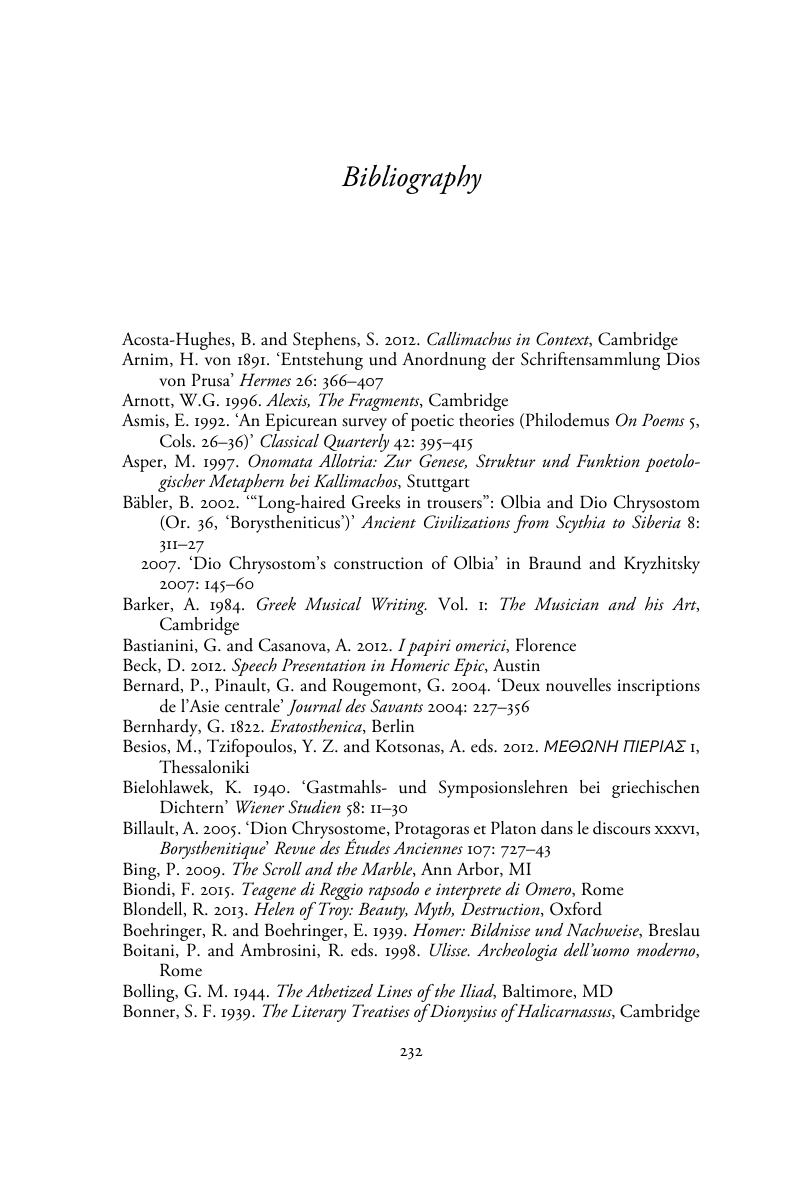Book contents
- The Measure of Homer
- Frontispiece
- The Measure of Homer
- Copyright page
- Contents
- Preface
- Abbreviations
- Chapter 1 Placing Homer
- Chapter 2 Homer and the Divine
- Chapter 3 The Golden Verses
- Chapter 4 Homer among the Scholars
- Chapter 5 The Pleasures of Song
- Bibliography
- Index of Passages Discussed
- General Index
- References
Bibliography
Published online by Cambridge University Press: 28 April 2018
- The Measure of Homer
- Frontispiece
- The Measure of Homer
- Copyright page
- Contents
- Preface
- Abbreviations
- Chapter 1 Placing Homer
- Chapter 2 Homer and the Divine
- Chapter 3 The Golden Verses
- Chapter 4 Homer among the Scholars
- Chapter 5 The Pleasures of Song
- Bibliography
- Index of Passages Discussed
- General Index
- References
Summary

- Type
- Chapter
- Information
- The Measure of HomerThe Ancient Reception of the <I>Iliad</I> and the <I>Odyssey</I>, pp. 232 - 246Publisher: Cambridge University PressPrint publication year: 2018



